



Walking Seattle: 35 Tours of the Jet Citys Parks, Landmarks, Neighborhoods, and Scenic Views
Second edition, first printing
Copyright 2018 by Clark Humphrey
Distributed by Publishers Group West
Manufactured in the United States of America
Cover design: Scott McGrew
Cartography: Steve Jones and Scott McGrew; map data: OpenStreetMap
Interior design: Lora Westberg
Cover photo: Gas Works Park Anthony Ricci/Shutterstock
Interior photos: Clark Humphrey
Frontispiece: The Space Needle (see )
Library of Congress Cataloging-in-Publication Data
Names: Humphrey, Clark, author.
Title: Walking Seattle : 35 tours of the Jet Citys parks, landmarks, neighborhoods, and scenic views / Clark Humphrey.
Description: Second Edition. | Birmingham, Alabama : Wilderness Press, an imprint of AdventureKEEN, [2018] | First edition: 2011. | Distributed by Publishers Group WestT.p. verso. | Includes index.
Identifiers: LCCN 2018013227 | ISBN 9780899978130 (paperback) | ISBN 9780899978147 (ebook)
Subjects: LCSH: WalkingWashington (State)Seattle Metropolitan AreaGuidebooks. | HikingWashington (State)Seattle Metropolitan AreaGuidebooks. | Outdoor recreationWashington (State)Seattle Metropolitan AreaGuidebooks. | Seattle Metropolitan Area (Wash.)Guidebooks.
Classification: LCC GV199.42.W22 S425 2018 | DDC 796.5109797/772dc23
LC record available at https://lccn.loc.gov/2018013227
Published by  WILDERNESS PRESS
WILDERNESS PRESS
An imprint of AdventureKEEN
2204 First Ave. S., Suite 102
Birmingham, AL 35233
800-443-7227, fax 205-326-1012
Visit wildernesspress.com for a complete listing of our books and for ordering information. Contact us at our website, at facebook.com/wildernesspress1967 , or at twitter.com/wilderness1967 with questions or comments. To find out more about who we are and what were doing, visit blog.wildernesspress.com .
All rights reserved. No part of this book may be reproduced in any form, or by any means electronic, mechanical, recording, or otherwise, without written permission from the publisher, except for brief quotations used in reviews.
SAFETY NOTICE: Although Wilderness Press and the author have made every attempt to ensure that the information in this book is accurate at press time, they are not responsible for any loss, damage, injury, or inconvenience that may occur to anyone while using this book. Always check local conditions, know your own limitations, and consult a map.
Acknowledgments
Roslyn Bullas originally hired me to write this book. Gregory Zura first suggested I pursue it.
Many, many people helped me decide what local attractions absolutely had to be included here. A few of them include Revele Kelley, Laura Castellanos, Kurt Geissel, Marlow Harris, Elaine Bonow, Patricia Devine, Julie Pheasant-Albright, Shawn Wolfe, Missy Chow, Bill Shaw, and Mark Harlow.
Authors Note
Theres so much to see and do in Seattle. My hardest job was devising only 35 routes that would include most of the citys natural and built attractions. Some of the places that didnt fit are mentioned in sidebars.
Even within the neighborhoods I do cover, space requirements meant I had to leave out a lot of cool places. If you have the time, go ahead and stray from the written path. Just be sure you can retrace your steps.

Numbers on this overview map correspond to walk numbers. A map for each tour follows the text for that walk.
Table of Contents
Introduction
This book first came out in the autumn of 2011. Whats changed since then? Around here, seemingly almost everything.
Seattles population, which dipped below 500,000 in the 1980s, is now more than 700,000. Once-quiet commercial streets have become condo canyons. We are home to two of Americas top four retailers and are a center of high-tech trends, from cloud computing to biomedicine.
Waves of affluent, young, mostly male tech bros are filling luxury apartments, flooding East Pike Street at night, and turning car traffic into a crowded crawl at all hours.
Fortunately, Seattle is still a great place to walk. And, fortunately, there are still tons of great sights and experiences that you can reach on foot.
Yes, some of the independent stores and restaurants in this books first edition have left us. But others have emerged. And our many parks, gardens, boulevards, historic landmarks, and spectacular views still beckon.
Our sometimes-steep hills also remain. These walks have been devised to avoid serious inclines. The one exception, in Discovery Park (), can be taken in reverse to avoid the steepest climb.
So get on your feet and join me in exploring one of North Americas most dynamic, and most beautiful, cities.
Pioneer Square
Cobblestones of History

King Street Stations restored lobby
BOUNDARIES: 3rd Ave., Cherry St., 1st Ave. S., and CenturyLink Field
DISTANCE: 1.75 miles
DIFFICULTY: Easy (all flat or downhill)
PARKING: Limited metered street parking; pay lots and garages
PUBLIC TRANSIT: Seattle Transit Tunnel Pioneer Square Station on 3rd Ave., south of Cherry St.; First Hill Streetcar at S. Jackson St. and Occidental Ave. S.; numerous Metro bus routes on 3rd
The first white settlement in present-day Seattle was established in 1851 at Alki Point (). After one miserable winter there, the settlers built a township along a small patch of level land surrounded by forested hills, tidal flats, and Elliott Bay. This is where Henry Yesler built his lumber mill; where the logs for Yeslers mill were skidded downhill on the original Skid Road; where the first stores, saloons, and bawdy houses opened. Those wooden buildings burned in the Great Seattle Fire of 1889. Brick and stone structures, advertisements of a town striving for greatness, replaced them. These architectural classics were preserved by neglect as downtowns core moved north. Theyre now mostly intact and restored as monuments to yesterdays hopes for a grand tomorrow.
Walk Description
Start at the 700 3rd Ave. Business leaders associated with the Alaska trade built this stoic white-clad structure in 1916. The building notes this connection with rows of terra-cotta walrus heads, whose tusks were originally marble (since replaced with terra-cotta and plastic). The clubs meeting space was the grand Dome Room, named for its curved stained glass ceiling. The building is now an elegant boutique hotel; its handsome lounge and dining area are on the floor beneath the Dome Room. Walk southeast from here to Cherry St.
Cross 3rd at Cherry. In front of you is the Dexter Horton Building, another terra-cotta palace. It was built in 1924 for the Dexter Horton National Bank, which merged with two other banks in the 1930s to become Seattle-First National Bank (). On the southeast side of Cherry stands the Lyon Building, six handsome stories of brick and concrete dating to 1910. Walk on the northwest side of Cherry to 2nd Ave. Across 2nd is the 18-story, Beaux Arts Hoge Building, Seattles tallest building when it was built in 1911.
Next page
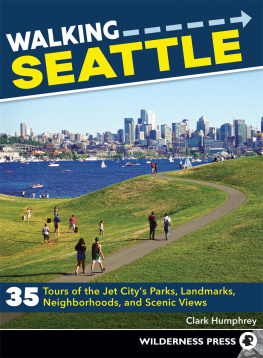
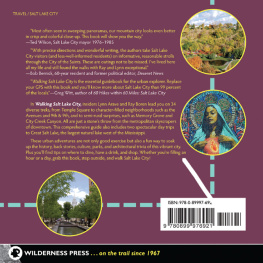
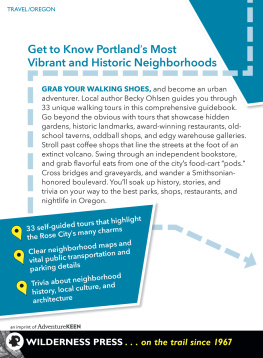
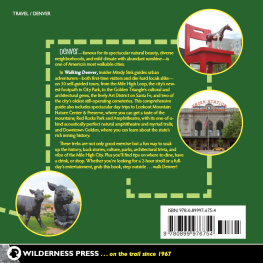
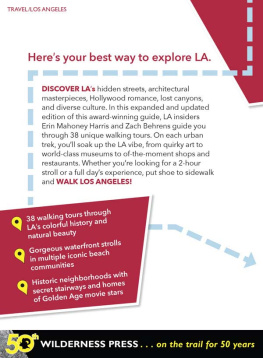
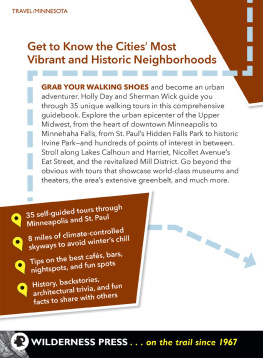
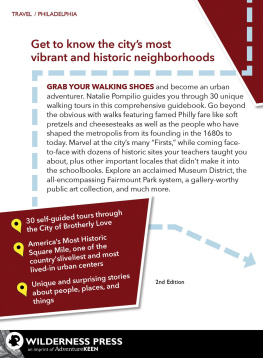
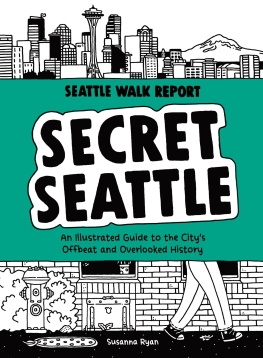

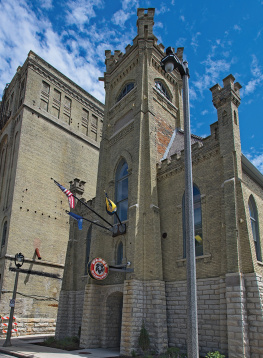
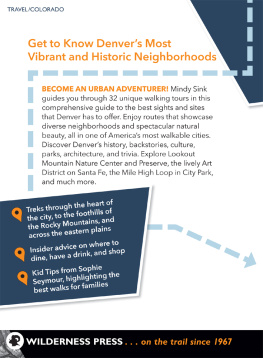





 WILDERNESS PRESS
WILDERNESS PRESS
